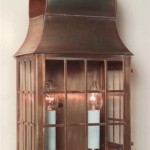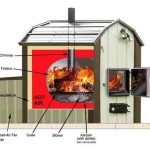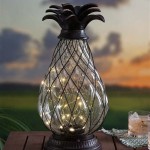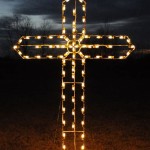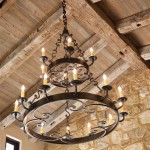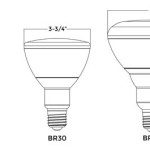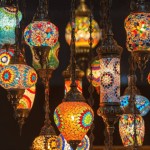Indoor/Outdoor LED Flexible Lighting Strips: A Comprehensive Guide
LED flexible lighting strips have revolutionized illumination options for both indoor and outdoor environments. These adaptable and energy-efficient lighting solutions offer a myriad of applications, from accentuating architectural details to providing functional task lighting. Understanding the key features, benefits, and installation considerations of LED flexible lighting strips is crucial for making informed decisions and achieving optimal results.
At their core, LED flexible lighting strips consist of light-emitting diodes (LEDs) mounted on a flexible circuit board, typically with an adhesive backing for easy installation. This construction allows the strips to be bent, cut, and shaped to fit various surfaces and contours. The LEDs themselves are semiconductor devices that emit light when an electric current passes through them. Their small size, long lifespan, and low energy consumption make them ideal for use in flexible lighting strips.
The flexibility and versatility of LED strips extend beyond their physical form. They are available in a wide range of colors, brightness levels, and color temperatures, providing options for creating different moods and atmospheres. Furthermore, many LED strips are dimmable, allowing users to adjust the light intensity to suit their needs. The availability of different IP (Ingress Protection) ratings also ensures that suitable strips can be selected for both indoor and outdoor applications, considering factors like moisture and dust exposure.
Understanding Key Features and Benefits
Several factors contribute to the widespread adoption of LED flexible lighting strips. Their unique combination of features and benefits makes them a compelling choice for various lighting projects.
One of the most significant advantages of LED strips is their energy efficiency. Compared to traditional incandescent or fluorescent lighting, LEDs consume significantly less power while producing the same amount of light. This translates to substantial energy savings over the lifespan of the strips, reducing electricity bills and minimizing environmental impact. The long lifespan of LEDs, often exceeding 50,000 hours, further contributes to cost savings by reducing the frequency of replacements.
The flexible nature of these strips allows them to be installed in locations where traditional lighting fixtures would be impractical. They can be bent around corners, wrapped around objects, and adhered to irregular surfaces, opening up a wide range of design possibilities. The ease of installation is another key benefit. Most LED strips come with an adhesive backing that allows them to be easily attached to clean, dry surfaces. They can also be cut to the desired length using scissors or a utility knife, making them highly customizable.
LED strips offer a high level of brightness control. Many strips are dimmable, allowing users to adjust the light intensity to create the desired ambiance. This feature is particularly useful in residential settings, where different lighting levels may be required for different activities. The availability of various color temperatures, ranging from warm white to cool white, also allows users to fine-tune the lighting to their preferences.
Durability is another important consideration. LED strips are generally more resistant to shock and vibration than traditional lighting sources. This makes them a good choice for applications where they may be exposed to harsh conditions. The availability of waterproof and weatherproof LED strips ensures that they can be used safely and reliably in outdoor environments.
Indoor Applications of LED Flexible Lighting Strips
The versatility of LED flexible lighting strips makes them suitable for a wide range of indoor applications. They can be used to create accent lighting, task lighting, and decorative lighting in various rooms of the house.
In the kitchen, LED strips can be used to provide under-cabinet lighting, illuminating countertops and making food preparation easier. They can also be used to highlight architectural features, such as backsplashes and islands. In the living room, LED strips can be used to create ambient lighting, adding warmth and atmosphere to the space. They can be installed behind televisions, along bookshelves, or under furniture to create a soft, indirect light.
In bedrooms, LED strips can be used to create mood lighting. They can be installed behind headboards, under beds, or along the ceiling to create a relaxing and inviting atmosphere. Dimmable LED strips are particularly useful in bedrooms, as they allow users to adjust the light intensity to suit their needs. In bathrooms, LED strips can be used to illuminate mirrors, showers, and bathtubs. Waterproof LED strips are essential for bathroom applications to prevent damage from moisture.
Beyond residential applications, LED strips are also widely used in commercial settings. They can be used to illuminate retail displays, create eye-catching signage, and provide task lighting in offices and workspaces. Their energy efficiency and long lifespan make them a cost-effective lighting solution for businesses.
Furthermore, LED strips are increasingly used in decorative lighting applications. They can be incorporated into art installations, used to create custom lighting fixtures, and even used to decorate clothing and accessories. The possibilities are endless, limited only by imagination.
Outdoor Applications and Considerations
LED flexible lighting strips are equally well-suited for outdoor applications, transforming gardens, patios, and facades with their vibrant and adaptable illumination. However, selecting the right type of strip and ensuring proper installation are crucial for safety and longevity.
In gardens, LED strips can be used to highlight trees, shrubs, and flower beds. They can be installed along pathways, around fountains, or under benches to create a magical and inviting atmosphere. IP-rated waterproof or weatherproof LED strips are essential for outdoor garden applications to protect them from rain, snow, and other environmental factors. The IP rating indicates the level of protection against dust and water ingress.
On patios and decks, LED strips can be used to create ambient lighting for outdoor entertaining. They can be installed under railings, around pergolas, or along the edges of steps to provide visibility and create a welcoming ambiance. Consider using dimmable LED strips to adjust the light intensity based on the occasion and your mood.
LED strips can also be used to illuminate building facades, highlighting architectural details and enhancing curb appeal. They can be installed along rooflines, around windows, or under eaves to create a dramatic and eye-catching effect. Ensure that the selected LED strips are specifically designed for outdoor use and can withstand exposure to sunlight, rain, and temperature fluctuations.
When installing LED strips outdoors, it is essential to use appropriate mounting hardware and connectors. The adhesive backing may not be sufficient to hold the strips in place in all conditions, especially in windy or exposed locations. Consider using clips, brackets, or channels to secure the strips to the surface. Ensure that all connections are waterproof and that the power supply is properly grounded.
Consider the surrounding environment when choosing the color and brightness of the LED strips. Avoid using excessively bright lights that could cause glare or disturb neighbors. Warmer color temperatures tend to be more inviting and less harsh than cooler color temperatures. Use low-voltage LED strips and a suitable power supply to ensure electrical safety.
In colder climates, consider using LED strips that are specifically designed for low-temperature operation. Some LED strips may not function properly or may have a reduced lifespan when exposed to freezing temperatures. Consult the manufacturer's specifications to ensure that the selected strips are suitable for the intended environment.
Installation Best Practices
Proper installation is crucial for ensuring the safety, longevity, and optimal performance of LED flexible lighting strips. Regardless of the application, following these best practices will help achieve the desired results.
Before beginning the installation, carefully plan the layout of the LED strips. Consider the desired effect, the available space, and the location of power outlets. Measure the length of the strips required and cut them to size using scissors or a utility knife at the designated cutting points. Avoid cutting the strips in the middle of an LED or circuit.
Clean the surface where the LED strips will be installed. Remove any dirt, dust, or grease that could prevent the adhesive backing from sticking properly. Use a mild detergent or isopropyl alcohol to clean the surface, and allow it to dry completely before applying the strips.
When installing the strips, peel off the protective backing from the adhesive and carefully press the strips onto the surface. Apply even pressure to ensure that the strips are firmly attached. Avoid stretching or kinking the strips, as this could damage the LEDs or circuit board.
When connecting multiple LED strips together, use appropriate connectors. Soldering is the most reliable method of connecting LED strips, but it requires some skill and experience. Alternatively, you can use solderless connectors, which are easier to install but may not be as reliable. Ensure that the connectors are properly sized for the width of the LED strips and that they provide a secure electrical connection.
Connect the LED strips to a suitable power supply. The power supply should be compatible with the voltage and wattage requirements of the LED strips. Use a low-voltage power supply for safety, typically 12V or 24V. Ensure that the power supply is properly grounded and that all connections are secure. Consider using a dimmer switch to control the brightness of the LED strips.
Test the LED strips after installation to ensure that they are working properly. Check for any flickering, dimming, or other issues. If you encounter any problems, troubleshoot the connections and power supply.
Regular maintenance can help prolong the lifespan of LED strips. Clean the strips periodically with a soft cloth to remove any dust or dirt. Avoid using harsh chemicals or abrasive cleaners, as these could damage the LEDs or circuit board. Inspect the connections and power supply for any signs of damage or corrosion.
/product/51/450348/1.jpg?strip=all)
Generic Led Strip Flexible Tape Indoor And Outdoor Light With Remote Control Jumia

Ke Ovqtnk713ta9 Yowxii Warm White Led Strip Lights Indoor Outdoor For Room Waterproof Flexible Home Decor Lazada Ph

West Ivory Warm White To Cool Smd 5630 Led Flexible Dimmable Indoor Outdoor Light Strip 4 Colors Remote Timer Com

Flexible Rgb Led Strip Lights For Indoor Outdoor Exterior Stairs Cabinet Waterproof 5m 12v 24v Smd 5050 2835 Cri 90 China Light Made In Com

New 5 10 15 Meters Indoor Outdoor Led Rgb Strip Light Color Changing Smd 3528 Flexible Lights With Remote And Adaptor Complete Set Lazada Ph

Led Strip Lights Battery Operated Eeekit 3 28ft Rgb Light Smd5050 Rope For Room Color Changing Flexible Kit Party Indoor Outdoor Decoration Com
Whole Factory 12v 24v Ip67 Silicone Neon Flexible Led Light Strip For Landscape Lighting Outdoor Indoor Decoration China Flex Made In Com

16 Color Led Strip Lights Smd 5050 Flexible Dimmable With Remote West Ivory Lighting

Plastic Led Flexible Neon Light 120 Per Metre For Indoor Outdoor Use Ip66

West Ivory Warm White To Cool Smd 5630 Led Flexible Dimmable Indoor Outdoor Light Strip 4 Colors Remote Timer Com
Related Posts

